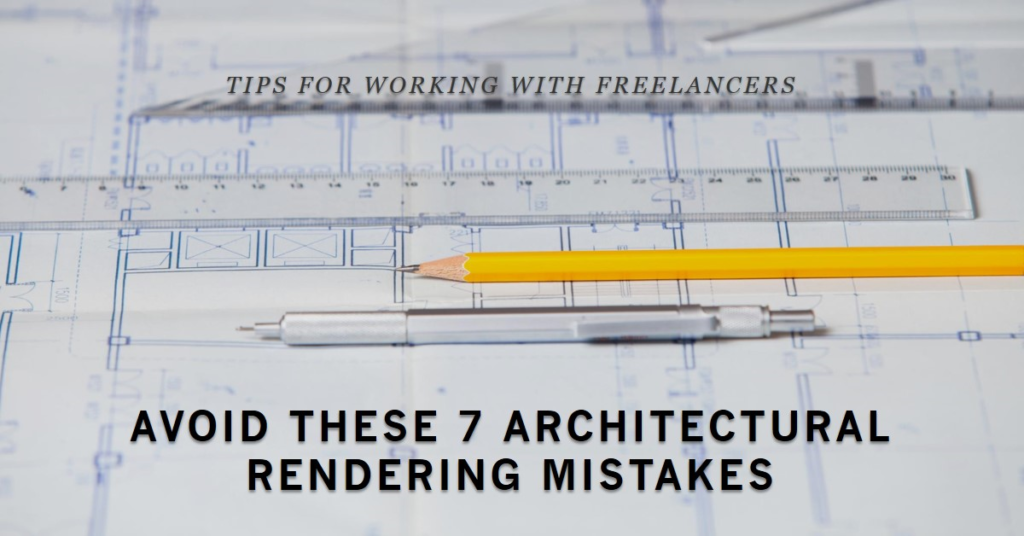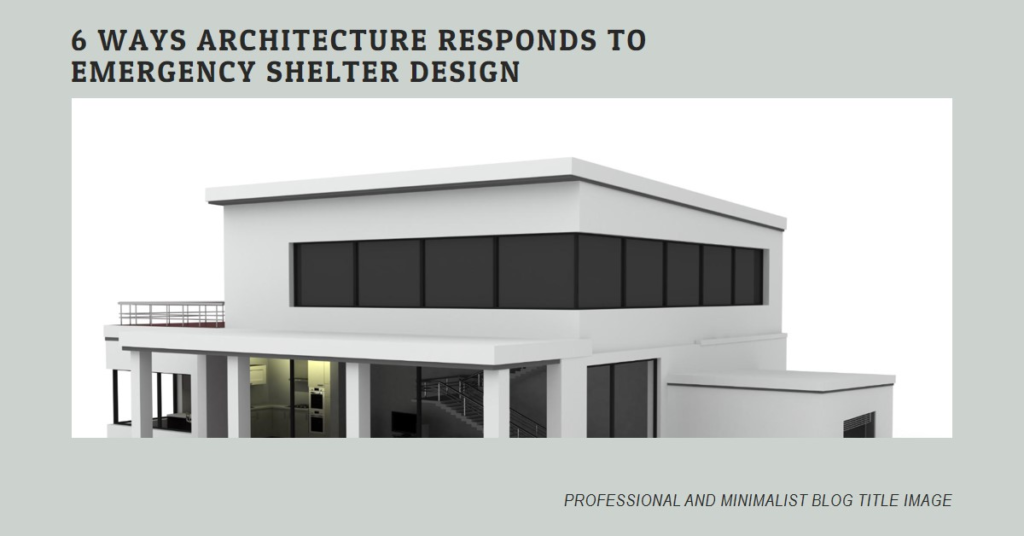
Table of Contents
Architectural Rendering MistakesCollaborating with freelance architectural renderers can be a rewarding experience, offering flexibility and access to diverse talents. However, to ensure project success and deliver high-quality visualizations, it’s crucial to navigate common pitfalls that may arise during the collaboration process. In this detailed exploration, we’ll delve into ten key architectural rendering mistakes to recognize and avoid when working with freelancers. By understanding these challenges and implementing proactive strategies, you can optimize workflow efficiency, maintain design integrity, and exceed client expectations.
1. Insufficient Project Briefing and Scope Definition
A critical mistake often encountered when working with freelancers is providing an unclear or inadequate project brief. Without a detailed understanding of the project scope, objectives, design requirements, and client preferences, freelancers may struggle to deliver renderings that align with expectations. This can lead to revisions, misunderstandings, and project delays.
To address this, ensure that your project brief includes comprehensive information such as architectural plans, reference materials for materials and textures, lighting preferences, intended use of the renderings (e.g., marketing, presentations), and specific client expectations regarding aesthetics and style. Encourage open communication channels for freelancers to seek clarifications and provide updates throughout the project lifecycle. Clarity in project briefing sets the stage for a successful collaboration and reduces the likelihood of misaligned deliverables.
2. Lack of Clear Communication Channels (Architectural Rendering Mistakes)
Effective communication is the cornerstone of successful freelance collaborations. Communication gaps, delays in responses, or misinterpreted messages can hinder progress and lead to misunderstandings. Establishing clear communication channels and protocols early in the collaboration mitigates these risks.
Utilize project management tools, email, instant messaging platforms, or video conferencing software to maintain regular communication with freelancers. Clearly define roles, responsibilities, contact persons, and preferred communication methods in the project brief or contract. Schedule regular check-ins, milestone reviews, and feedback sessions to ensure alignment, address concerns promptly, and keep the project on track.
3. Unrealistic Timelines and Expectations
Setting unrealistic deadlines or expectations regarding project turnaround times is a common mistake that can strain relationships with freelancers and compromise quality. Rushed projects often lead to subpar results, increased revisions, and dissatisfaction on both sides.
Collaborate with freelancers to establish realistic project timelines based on the scope of work, complexity of renderings, required revisions, and availability of resources. Consider factors such as rendering times, revision cycles, and feedback incorporation when setting deadlines. Transparent communication about project milestones, deadlines, and potential challenges fosters a collaborative environment focused on quality outcomes within achievable timeframes.
4. Ignoring Portfolio and Experience Evaluation
Failing to assess a freelancer’s portfolio, experience, and skillset before engagement can result in mismatched expectations and deliverables. Every freelancer brings unique strengths, styles, and expertise to the table, and aligning these with your project requirements is crucial for success in Architectural Rendering Mistake
Review freelancers’ portfolios, previous projects, client testimonials, and industry experience to gauge their proficiency, style versatility, and ability to meet your project needs. Consider conducting trial tasks or small projects to assess compatibility, communication style, and quality of deliverables before committing to larger-scale collaborations. Prioritizing skill evaluation and portfolio review ensures that you engage freelancers who can deliver high-quality renderings aligned with your vision.
5. Overlooking Collaboration Tools and File Sharing Protocols
Effective collaboration relies on robust tools and protocols for file sharing, version control, and project management. Neglecting to establish clear workflows and platforms for collaboration can lead to confusion, file discrepancies, and version conflicts, impacting productivity and project outcomes.
Choose reliable collaboration platforms such as cloud storage services, project management software, or version control systems that facilitate seamless file sharing, real-time updates, and document organization. Define naming conventions, file formats, folder structures, and access permissions to maintain consistency and streamline collaboration among team members and freelancers. Regularly update shared files, track revisions, and backup project data to prevent data loss or workflow disruptions.
6. Quality Assurance Oversight and Revision Management
Inadequate quality assurance processes and revision management strategies can result in overlooked errors, inconsistent deliverables, and client dissatisfaction. Effective quality control mechanisms and revision workflows are essential for maintaining rendering quality, addressing feedback, and meeting client expectations.
Implement thorough quality checks at key project milestones, incorporating visual inspections, technical validations, and client feedback loops. Define quality criteria such as image resolution, material accuracy, lighting consistency, and scene composition standards to ensure adherence to project standards. Establish clear revision protocols, including the number of included revisions, revision timelines, and communication channels for feedback and revisions. Streamline revision requests and approvals to minimize project delays and maintain workflow efficiency instead of Architectural Rendering Mistake
7. Payment Disputes and Contractual Ambiguities
Unclear payment terms, scope creep, or disputes over deliverables can strain freelancer-client relationships and impact project progress. Establishing clear contractual agreements and payment terms protects both parties’ interests and ensures a fair and transparent collaboration.
Draft comprehensive contracts or agreements outlining project scope, deliverables, timelines, payment schedules, revision policies, intellectual property rights, and dispute resolution procedures. Specify payment methods, invoicing processes, and milestones for payment releases in alignment with project progress. Regularly communicate project milestones, achievements, and any deviations from the initial agreement to maintain transparency and trust throughout the collaboration.
8. Lack of Feedback Loop and Continuous Improvement
Failing to provide constructive feedback and opportunities for continuous improvement limits collaborative growth and project excellence. Feedback loops, performance evaluations, and skill development initiatives foster a culture of continuous learning and enhancement in freelance collaborations.
Establish regular feedback sessions, project debriefs, or performance reviews with freelancers to discuss project progress, identify strengths, address areas for improvement, and align on future expectations. Encourage freelancers to share insights, suggestions, and innovative ideas that contribute to project success and client satisfaction. Invest in skill development resources, training programs, or workshops to upskill freelancers and enhance their contributions to ongoing and future projects.
9. Cultural and Language Barriers in Communication
Global collaborations with freelancers from diverse cultural backgrounds and language proficiency levels require sensitivity, clarity, and cultural awareness in communication. Miscommunications, language barriers, or cultural misunderstandings can hinder effective collaboration and project outcomes.
Respect cultural differences, language nuances, and communication styles when interacting with freelancers from different regions or linguistic backgrounds. Use clear, concise language, avoid jargon or slang, and provide context or examples when discussing project requirements or feedback. Utilize translation tools, multilingual resources, or interpreters if necessary to ensure clear and accurate communication across language barriers. Foster a collaborative and inclusive environment that values diversity, mutual respect, and effective cross-cultural communication.
10. Limited Scalability and Resource Planning


Scaling rendering projects or adapting to changing project requirements often requires scalable resources, flexible workflows, and strategic resource planning. Neglecting scalability considerations can lead to resource shortages, workflow bottlenecks, and challenges in meeting evolving project demands.
Evaluate project scalability requirements based on anticipated workload fluctuations, project phases, client feedback cycles, and potential scope expansions. Maintain a pool of skilled freelancers or outsourcing partners with diverse expertise, availability, and scalability capabilities to accommodate project variations and timelines. Implement agile project management practices, resource allocation strategies, and contingency plans to optimize resource utilization, mitigate risks, and ensure seamless project scalability as needed.
This comprehensive exploration of architectural rendering mistakes when collaborating with freelancers highlights key challenges and proactive strategies to enhance collaboration, project outcomes, and client satisfaction. By addressing these common pitfalls and fostering effective communication, quality control, and collaborative frameworks, you can elevate rendering projects to new levels of success and creativity. Let me know if you need further insights or specific topics related to architectural rendering collaborations!



1 Comment
Tatiana
Hello! Do you know if they make any plugins to assist with Search Engine Optimization? I’m trying to
get my website to rank for some targeted keywords but I’m not
seeing very good results. If you know of any please share.
Appreciate it!